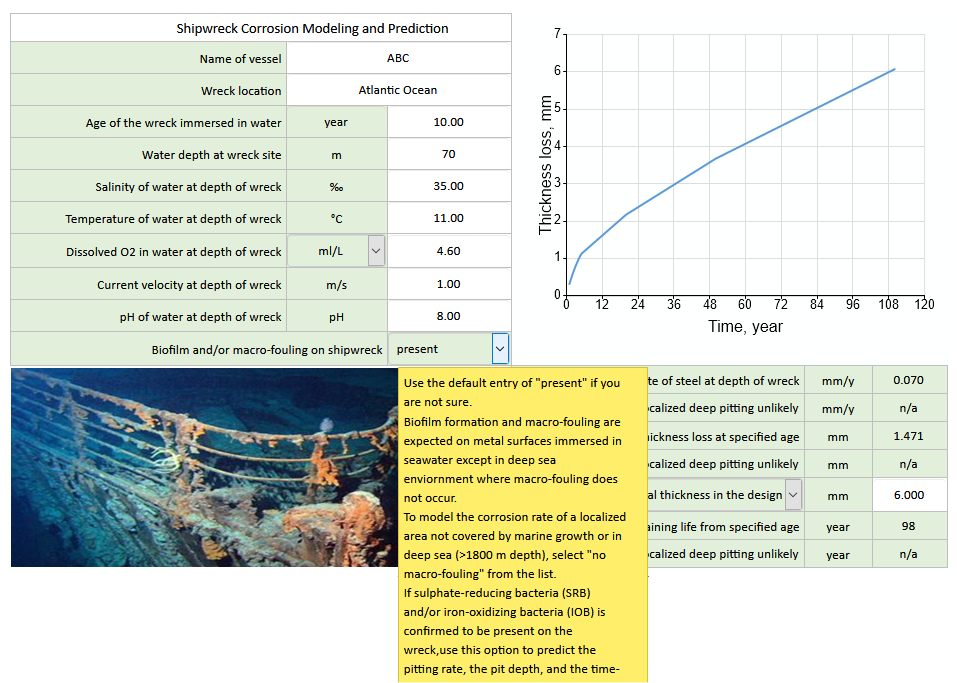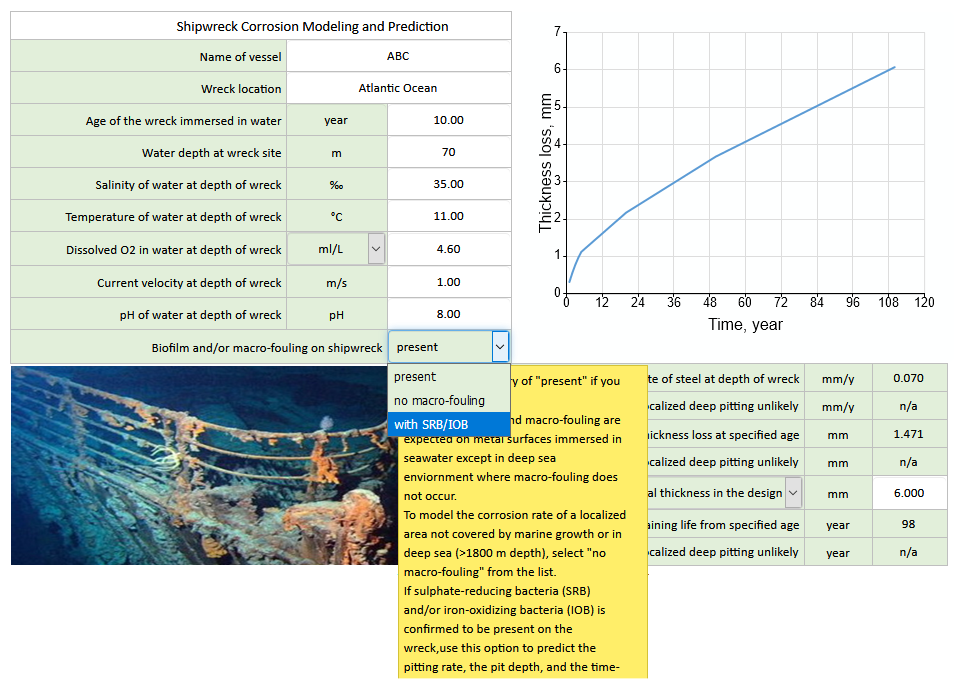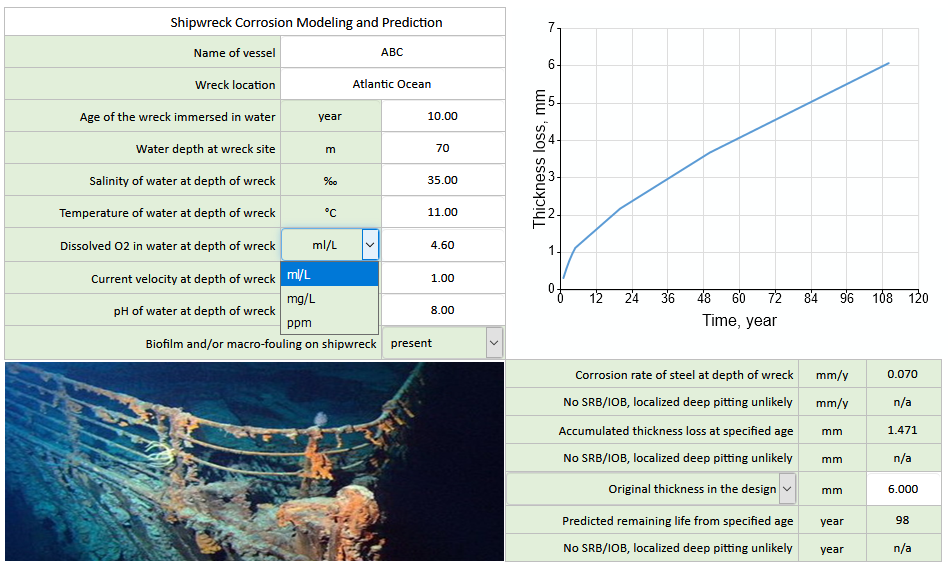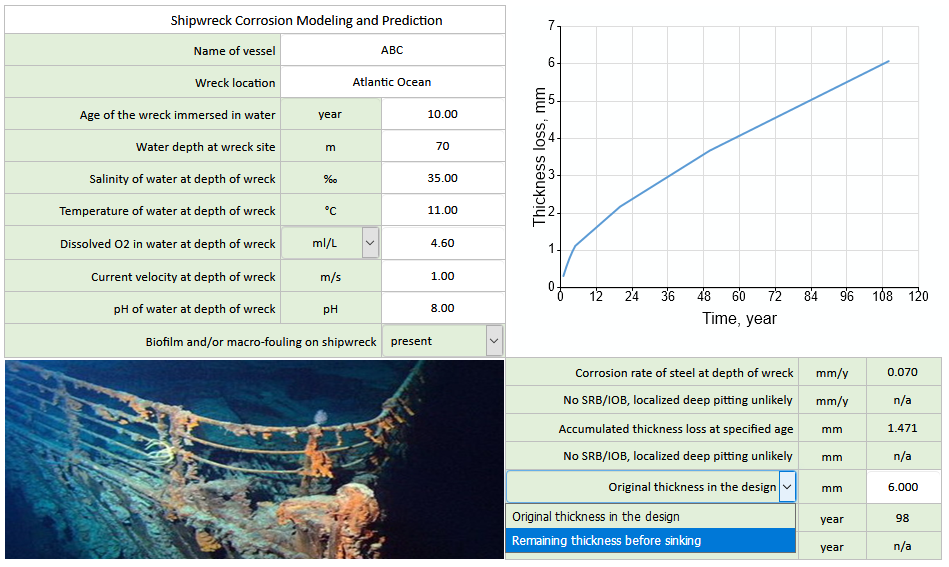|
Home | Consulting | Training | Expert Witness | Failure Analysis | Design Review | Corrosion Test | Corrosion Software | Coatings | Materials | CP | >>> | |||||||||||||||||||
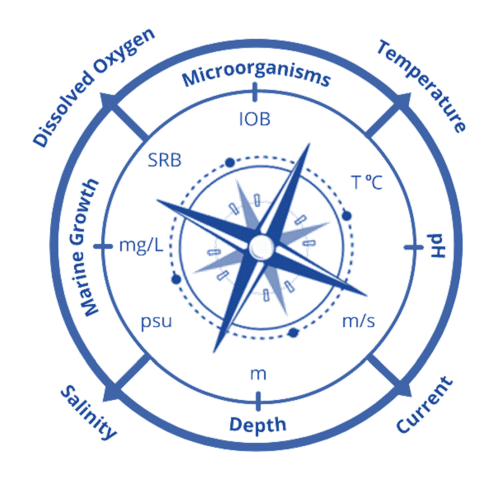
CO2Compass-SE®: Software for Shipwreck Corrosion Modeling and Shipwreck Corrosion Prediction
Anytime Anywhere Any Device Any OS No USB dongles No installation No Browser Plug-ins
|
|||||||||||||||||||
|
Why WebCorr |
Performance Guarantee |
Unparalleled Functionality |
Unmatched Usability |
Any Device Any OS |
Free Training & Support |
CorrCompass |
|||||||||||||||||||
|
Features and Functions of CO2Compass-SE |
|||||||||||||||||||
|
CO2Compass-SE is the only device and OS independent software tool on the market for shipwreck corrosion modeling and corrosion prediction. Its predictive engine is based on the rigorous frameworks of thermodynamics, physical chemistry, and corrosion kinetics. This software tool models the effects of dissolved oxygen, temperature, salinity, current velocity, pH, depth of water, marine growth and microorganisms including sulphate-reducing bacteria (SRB) and iron-oxidizing bacteria (IOB) on the corrosion rate, pitting rate, the thickness loss, pit depth, the remaining life, and the time-to-perforation, as shown in Figure 1 below for an oil tanker sank in the Atlantic Ocean in 2002.
Figure 1 CO2Compass-SE Predicts Shipwreck
the Corrosion Rate, the Thickness Loss, and the Remaining Life.
The predictive engine in CO2Compass-SE also takes into account the
effects of marine growth and microorganisms that are present in seawater
environments (Figures 2a and 2b). The biofilms that form on the metal surface have the capability to
influence the corrosion of the metal. The film itself can range from a
microbiological slime film to a heavy encrustation of hard-shelled
fouling organisms. This influence of biofilm derives from the ability of
the organisms to change the local environmental variables important to
corrosion such as dissolved oxygen, temperature, velocity, pH and
others. For example, a heavy encrustation of bio-fouling organisms on
steel immersed in seawater will often decrease the corrosion rate of the
steel as long as the cover of organisms remains complete and relatively
uniform. The heavy fouling layer acts as a barrier film in limiting the
amount of dissolved oxygen reaching the metal surface, thus reducing the
thickness loss of the steel. A layer of hard-shelled organisms, such as
barnacles or mussels, on steel also shields the metal from the damaging
effect of wave action.
Figure 2a: Modeling the effect of marine growth and microorganisms on
corrosion.
Figure 2b: Modeling the effect of marine growth and microorganisms on
corrosion.
CO2Compass-SE was designed with end users
in mind. Experience the first cross-platform and device-independent
Shipwreck Corrosion Modeling and Prediction application on your iPads,
tablets, smart phones, notebooks and desktops, at any time and anywhere,
in the office or on the sea. No installation files to download, no
browser plug-ins required, no USB dongles to carry around, and no
license keys to transfer from one PC to another. CO2Compass-SE simply
works on any device running any OS. All you need is an internet browser.
Users can enter the dissolved oxygen
concentration in any unit without the need to do manual conversion
(Figure 3). To predict the remaining life, users can either enter the
original thickness in the design (if known) or the remaining thickness
(if measured), as shown in Figure 4.
Figure 3 Dissolved Oxygen Concentration and Shipwreck Corrosion Prediction
Figure 4 Remaining Life Prediction of Shipwreck
Corrosion Prediction of a Warship Sank in World War I in 1915 In this application example, we have a look at the Corrosion Prediction of Submarine HMAS AE2 (1915) in the Sea of Marmara, Turkey. The Australian submarine AE2 was built in 1912 by Vickers Armstrong at Barrow-in-Furness, England, launched in 1913 and sank on 25 April 1915 at a depth of 73 m at the bottom of the Sea of Marmara, Turkey during World War I. The seawater physicochemical properties are as follows: Temperature: 14.1oC Dissolved oxygen: 2.6 ppm Salinity: 41.3 The ballast tank with an original thickness of 6.35 mm lost 1.75 mm in 92.4 years (till 2007) based on ultrasonic thickness gauge measurement, giving a corrosion rate of 0.0189 mm/y. Figure 5 shows the prediction results from CO2Compass-SE. Table 1 compares the measured and the predicted thickness loss and the corrosion rate. CO2Compass-SE predicts that the remaining life of the ballast tank is 253 years.
Figure 5 CO2Compass-SE Prediction of shipwreck corrosion and remaining life for Submarine HMAS AE2 (1915) Table 1 Comparison of the measured and the predicted thickness loss and the corrosion rate.
Corrosion Prediction of the USS Monitor Sank in 1862 The USS Monitor was the first iron-clad battleship equipped with a revolving gun turret constructed from 8 layers of 1-inch (2.54 cm) iron plates. It sank in a storm in December 1862 off the coast of Cape Hatteras, North Carolina, at a water depth of 70 m.
Ultrasonic thickness measurements
conducted in 2007 (144 years after sinking) on the outer turret plates
at eight locations near the gun openings showed a thickness loss of
about 5 mm. This gives an average measured corrosion rate of 0.035 mm/y.
Figure 6 shows the prediction results from CO2Compass-SE. The predicted
corrosion rate is 0.037 mm/y and the predicted thickness loss is 5.4 mm.
Figure 6 CO2Compass-SE Prediction of
shipwreck corrosion and remaining life for the USS Monitor (1862)
Table 2 Comparison of the measured and the predicted thickness loss and the
corrosion rate. Measured using ultrasonic thickness gauge Predicted using CO2Compass-SE 5 mm 5.4 mm 0.035 mm/y 0.037 mm/y
The powerful applications of CO2Compass-SE
are truly unlimited in both the conservation of shipwrecks with cultural and
historic values and the risk assessment of
shipwrecks with environmental concerns.
|
|||||||||||||||||||
CO2Compass-SE, giving you the right directions in Shipwreck Corrosion Modeling and Corrosion Prediction |
|||||||||||||||||||
|
Home | Contact Us | PDF |
Copyright © 1995-2020. All rights reserved. |
||||||||||||||||||





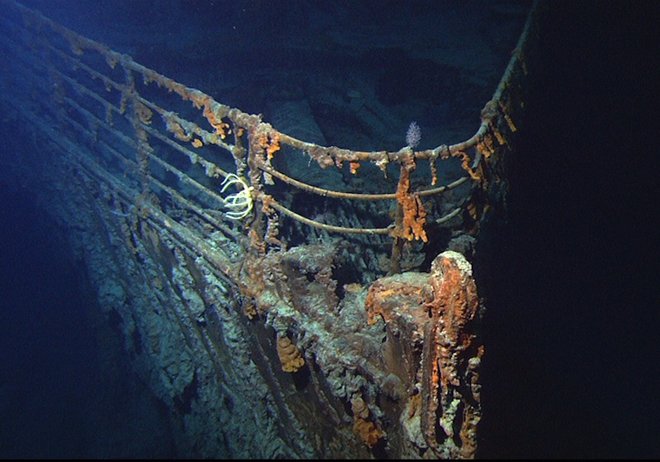 There
are many shipwrecks at the bottoms of oceans around the world.
Statistics shows that in the Pacific Ocean alone, there are about 3,000
WWII shipwrecks at risk of leaking oil and around 10 per cent of the
wrecks are oil tankers. Some of these wreckages have
cultural and historic significance while others have serious environmental concerns such as
oil leaking due to corrosion of the hull plate. Accurate prediction of
the corrosion rate and hence the remaining life, or the
time-to-perforation is important both to the
conservation of historic shipwrecks and to the environmental risk
assessment of others.
There
are many shipwrecks at the bottoms of oceans around the world.
Statistics shows that in the Pacific Ocean alone, there are about 3,000
WWII shipwrecks at risk of leaking oil and around 10 per cent of the
wrecks are oil tankers. Some of these wreckages have
cultural and historic significance while others have serious environmental concerns such as
oil leaking due to corrosion of the hull plate. Accurate prediction of
the corrosion rate and hence the remaining life, or the
time-to-perforation is important both to the
conservation of historic shipwrecks and to the environmental risk
assessment of others.